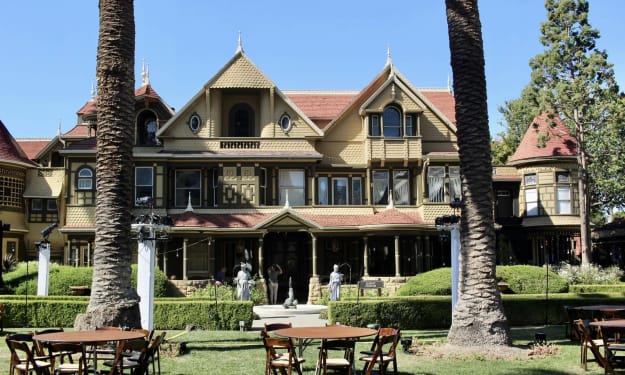The Oddities of Our Orbit: Why Leap Years Exist
Jumping Through Time: The Science and Stories Behind an Extra Day

This post was created with the support of OpenAI.
Time, in its relentless march, offers peculiar pauses. One such intriguing quirk is the leap year. Every four years, we get an additional day in February. But what prompts this calendrical anomaly? Join us in decoding the mystery of the leap year.
The Earth's Dance Around the Sun
The concept of a year arises from the Earth's orbit around the Sun. But what does that really mean? Our planet journeys around the Sun in an elliptical orbit. While we conventionally accept that a year consists of 365 days, the actual orbital period is approximately 365.24 days. It's this fractional day that builds up over time and necessitates a day's adjustment every four years. This slight discrepancy, if left unchecked, would eventually misalign our calendar with the solar year, resulting in seasons appearing at the wrong times.
The Ancient Egyptians: Pioneers of Leap Year
The Nile-dwelling civilization of ancient Egypt was deeply entwined with celestial events. Their agriculture depended on the predictable flooding of the Nile, which was heralded by the heliacal rising of the star Sirius. This event, which they noticed occurred every 365.25 days, hinted at the solar year being slightly longer than their 365-day calendar. This awareness laid the foundation for later calendar reforms.
Fine-Tuning Time: The Gregorian Adjustment
The Julian system was revolutionary but not perfect. Over centuries, the tiny inaccuracies added up. By the 16th century, the calendar had drifted by about 10 days from the solar year. In 1582, Pope Gregory XIII introduced an elegant solution. While most leap years remained, a year that's divisible by 100 would not be a leap year unless it's also divisible by 400. This ensured that years like 1700, 1800, and 1900 were not leap years, but 2000 was. This Gregorian calendar, with its nuanced adjustments, is what much of the world uses today.
February 29th: Traditions and Taboos
Leap Day, while mathematically practical, has taken on cultural significance in many societies. The Irish tradition, which reverses the proposal norms, dates back to a deal St. Bridget struck with St. Patrick, allowing women to propose to men every four years. This day also has its collection of leaplings or leapers — individuals born on February 29th. Their unique birthdate often leads to amusing scenarios: some choose to celebrate on February 28th or March 1st during common years, while others throw grand celebrations every four years.
The Practical Challenges of Leap Years
In today's digital age, leap years pose unique challenges. Computing systems, especially those that manage dates and times, have to be designed to account for this extra day. Older systems that didn't anticipate this occasionally encounter glitches. Financial systems, too, face dilemmas: how to calculate daily interest on a 366-day year? And for salaried employees on an annual pay, does February 29 mean an extra day's work without pay? These are just a few of the intriguing conundrums posed by the existence of leap years.
Beyond Earth: Leap Years in Space
It's easy to assume that leap years are a unique quirk of our planet, but they aren't exclusive to Earth. Mars, known as the red planet, with its 687-day long year, also has a leap year system. The Martian calendar, unlike ours, is occasionally adjusted by deleting a day rather than adding one. This is due to its more complex rotation and orbital dynamics. As we continue our exploration of space, understanding these planetary timekeeping systems will be essential.
Conclusion
Leap years, in their silent addition every four years, tell a tale of humanity's quest for precision and alignment with the universe. They echo our intrinsic need for order and our tireless ambition to dance in harmony with the cosmos. Each leap year, while a simple day on the surface, is a nod to the centuries of observation, understanding, and adaptation by civilizations past and present. As we mark another February 29th on our calendars, it serves as a reminder not just of time's passage, but of humanity's enduring relationship with the stars.
If this journey through time intrigued you, perhaps you're ready for another celestial marvel. Let the endless daylight mesmerize you in "Nature's 24-Hour Daylight Phenomenon". Time, in all its forms, never ceases to fascinate.
Thank you for taking the time to read our article!
If you enjoyed the content, please consider leaving a '<3' and Subscribe so you don't miss future releases!
If you wish to support us on our mission to provide free, weekly infotainment for you to enjoy, please consider pledging a small donation or leaving a tip - all donations help us to create our work and support us as creators.
If you wish to begin your Vocal journey, join the Vocal+ programme to get more for your work! Earn more per view, withdraw your profits quicker, access Vocal+ Challenges with prizes to be won weekly, and so much more by clicking here!
Let's start a conversation! Leave a comment on what you'd like us to discuss in future articles, or reach out on our Social Media Channels!
You're the reason we can continue doing what we love. We are forever grateful for your support!
About the Creator
People! Just say Something!
Quirky Writing created by Artistic Creativity and the power of AI with the goal of learning something new every day!
Facebook: https://www.facebook.com/PeopleJSS
Twitter: https://twitter.com/PeopleJSS






Comments
There are no comments for this story
Be the first to respond and start the conversation.